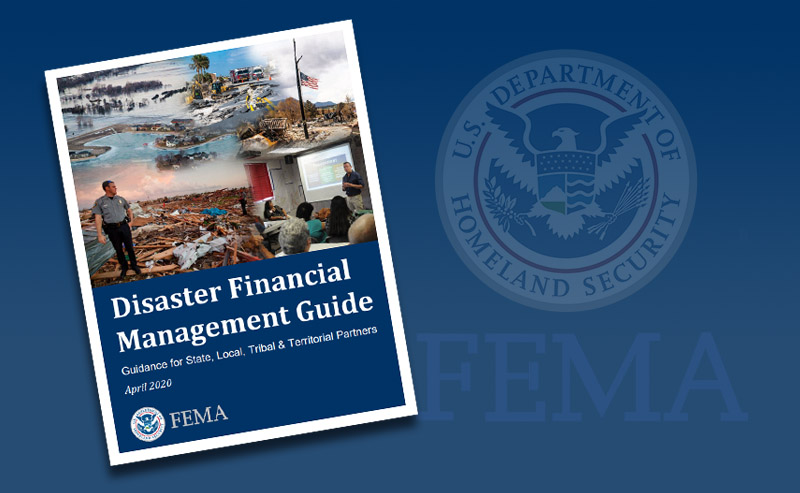On April 14, 2020, the Federal Emergency Management Agency (FEMA) released the “Disaster Financial Management Guide.” Its purpose is to support jurisdictions in establishing and implementing sound disaster financial management practices, which are critical for successful response and recovery. This is especially useful information in the current operational environment and ongoing COVID-19 pandemic.
According to FEMA, the guide identifies the capabilities and activities necessary to prepare and successfully implement disaster financial management while maintaining fiscal responsibility throughout response and recovery operations. This includes considerations and practices necessary to track, calculate and justify the costs of an emergency, support local reimbursement reconciliation, avoid de-obligation of grant funding and effectively fund and implement recovery projects and priorities.
The principles, concepts, and resources contained in the guide can support jurisdictions in identifying the resources needed to support their community, increase the efficiency of recovery efforts, and reduce the likelihood of audits and financial penalties for the jurisdiction.
Further, the guide also presents an overview of common disaster assistance and recovery funding programs that may be beneficial to recovery efforts. Although there are many government and private/non-profit sector recovery resources and programs designed to aid jurisdictions, navigating the various eligibility requirements and application processes pose administrative challenges for jurisdictions.
Like other FEMA documents, the “Disaster Financial Management Guide” takes an all-hazards approach and addresses a broad range of issues faced by jurisdictions of every size. And again, its concepts, principles, and resources may prove useful in your own jurisdiction’s COVID-19 response and recovery efforts. To view the guide, visit https://www.fema.gov/plan.






